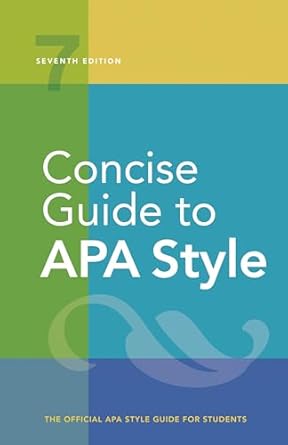[toc]
mastering abbreviations apa style guide
Concise Guide to APA Style: 7th Edition (OFFICIAL)
Page 136 Review
A Deep Dive into APA’s Abbreviation Guidelines: A Review
This section of the ebook delves into the specific guidelines for using abbreviations, a critical aspect of academic and professional writing.
The focus is primarily on clarity and consistency, ensuring that readers can easily understand the abbreviated terms used within the text.
Defining Abbreviations in Text
The text emphasizes the importance of defining abbreviations when they are first introduced.
As stated, “When you first use a term that you want to abbreviate in the text, present both the full version of the term and the abbreviation.” This ensures that the reader knows exactly what the abbreviation stands for from the outset.
The guide further elaborates on how to handle abbreviations in different contexts:
- Headings: “When the full version of a term appears for the first time in a heading, do not define the abbreviation in the heading; instead, define the abbreviation when the full version next appears.
Use abbreviations in headings only if the abbreviations have been previously defined in the text or if they are listed as terms in the dictionary.” This avoids cluttering headings with definitions and maintains readability.
- Sentences: “When the full version of a term first appears in a sentence in the text, place the abbreviation in parentheses after it.
For example: attention-deficit/hyperactivity disorder (ADHD).” This is a standard practice that clearly links the full term with its abbreviated form.
- Parenthetical Text: “When the full version of a term first appears in parenthetical text, place the abbreviation in square brackets after it.
Do not use nested parentheses.
For example: (i.e., attention-deficit/hyperactivity disorder [ADHD]).” This clarifies the use of square brackets within parentheses to avoid confusion.
- Citations: “If a citation accompanies an abbreviation, include the citation after the abbreviation, separated with a semicolon.
Do not use nested or back-to-back parentheses.
For example: Beck Depression Inventory-II (BDI-Il; Beck et al., 1996).” This ensures that citations are correctly formatted alongside abbreviations.
Abbreviations in Tables and Figures
The ebook stresses the importance of defining abbreviations within each table and figure, irrespective of whether they have been defined in the main text.
The text states: “Define abbreviations used in tables and figures within each table and figure, even if the abbreviations have already been defined in the text.” This ensures that readers can understand the tables and figures without having to refer back to the main text.
The text provides additional guidelines:
- Placement of Definitions: The abbreviation can appear in parentheses after the first use of the term within the table or figure, including in the title, or the definition can appear in a table or figure general note or a figure legend.
- Redundancy: “If an abbreviation is used in multiple tables and figures, define it in each table or figure.” This reinforces the principle of self-contained understanding for each visual element.
- Exclusions: “Do not define abbreviations that do not appear in a table or figure.
Do not define or write out standard abbreviations for units of measurement and statistics in a table or figure.” This avoids unnecessary clutter and focuses on what is relevant to the specific table or figure.
Formatting Abbreviations: Plural Forms
The ebook also touches upon the formatting of abbreviations, particularly when forming plural forms. “To form the plural of most abbreviations and statistical symbols, add a lowercase “s” alone, without an apostrophe.
For example: DOIs.” This is a simple but crucial rule to remember for consistency and accuracy.
Key Takeaways
In conclusion, this section of the ebook provides a comprehensive guide to using abbreviations effectively and correctly.
The key principles are:
- Always define an abbreviation when it first appears in the text, table, or figure.
- Maintain consistency in formatting.
- Prioritize clarity for the reader.
By adhering to these guidelines, writers can ensure that their use of abbreviations enhances, rather than hinders, the understanding of their work.
Buy full ebook for only $18: https://www.lulu.com/shop/american-psychological-association/concise-guide-to-apa-style-7th-edition-official/ebook/product-rmzpq54.html?page=1&pageSize=4
Mastering Abbreviations Apa Style Guide
Read more: Bias-Free Writing: APA Guidelines & Best Practices


Leave a Reply